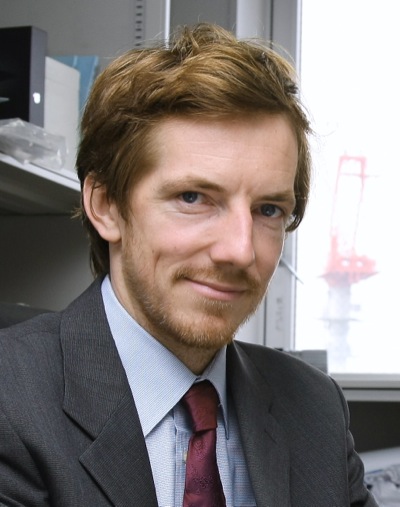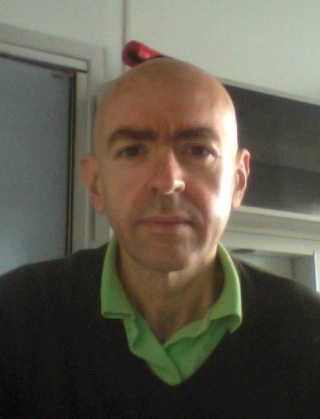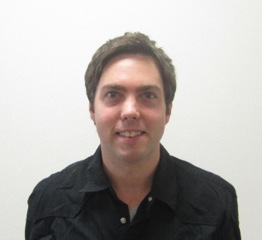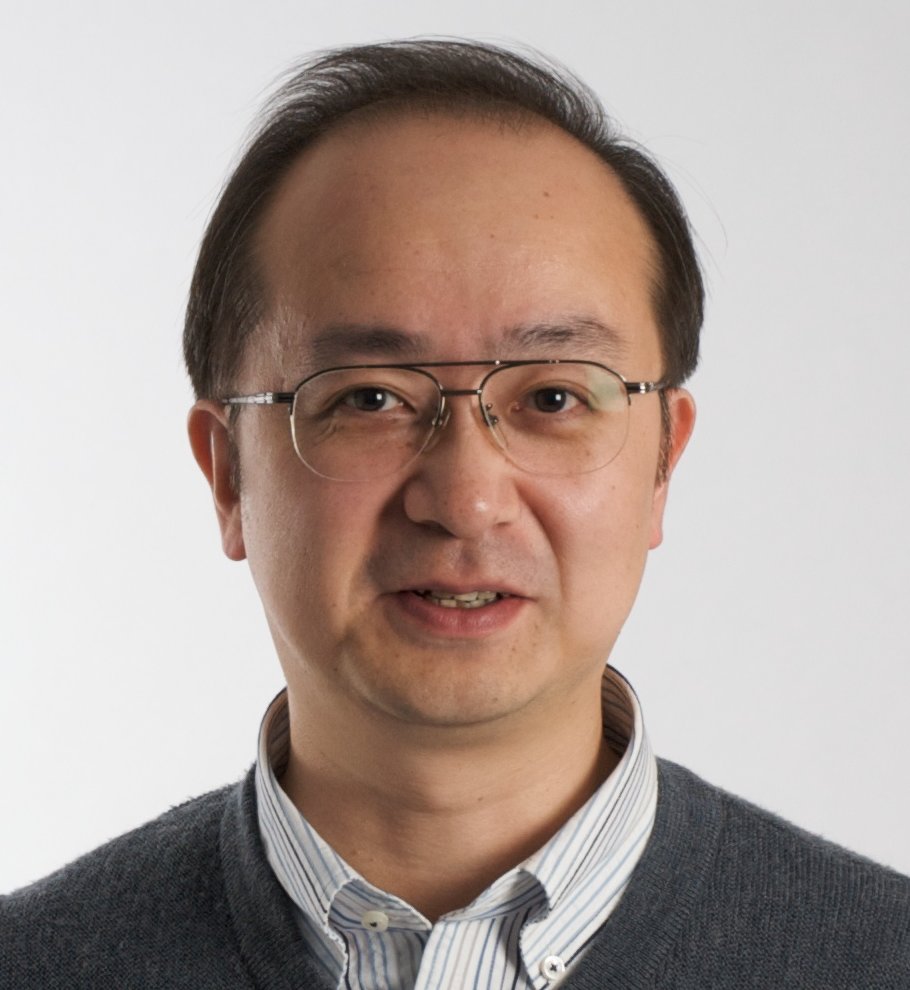Invited Talks Abstracts & Key words
- Session I. Theories and analyses for exploring mesoscopic world
- Session II. Power of Engineering in New Facets of Biology
- Session III. Estimation of Model Parameters using Time-series Data
- Session IV. Advances in probing cytoskeletal and chromosomal dynamics in dividing cells
Session I. Theories and analyses for exploring mesoscopic world
Co-Chairs: Yoshiyuki Arai (Osaka University, Japan) and Rinshi Kasai (Kyoto University, Japan)
 |
Prof. Madan Rao (to be confirmed) |
| National Center for Biological Sciences, India | |
| Talk Title: TBA | |
| Author: TBA | |
| Abstract: | |
| Keywords: |
 |
Dr. Ziya Kalay |
| Institute for Integrated Cell-Material Sciences (WPI-iCeMS), Kyoto University, Japan | |
| Talk Title: Molecular encounters at the mesoscale: effects of low numbers and confinement | |
| Author: Ziya Kalay | |
| Abstract: | |
| Keywords: | Stochastic dynamics, reaction kinetics, random walks, mesoscopic phenomena, confinement effects |
 |
Dr. Chun-Biu Li |
| Research Institute for Electronic Science, Hokkaido University, Japan | |
| Talk Title: Modeling Single Molecule Kinetics Objectively from Dwell-time time series | |
| Authors: Chun-Biu Li* and Tamiki Komatsuzaki *cbli at es.hokudai.ac.jp |
|
| Abstract: | Complex dynamics of a wide range of biophysical systems, such as the opened/closed gating of ion channels,
the On/Off fluorescent kinetics in single enzymatic turnovers, are often probed experimentally in the form of
time series with finite discrete levels. Statistics of the dwell-time time series, the stationary state
distributions (SSDs) associated with the chronological sequence of the lengths of time that the system
dwells at each level, have been studied to infer the underlying dynamics and kinetics of the system.
However, it is well known that the underlying kinetic scheme, a hidden Markov model (HMM) composed of states
and state transitions, cannot be identified uniquely from the SSDs of dwell-times because some states and the
associated transitions of the underlying HMM are hidden and cannot be resolved by finite-level measurements.
Here, I present an information-theoretic framework to quantify the amount of excessive information contained
in a given HMM that is not warranted by the measured dwell-time statistics. In this framework, the HMM with
minimum excessive information can be uniquely identified and it is regarded as the most objective representation
one can extract from the observed data. The minimum excessive information enables us to compare the degree of
identifiability of the underlying HMM for measurements of the same system using different observables.
The method is applied to a single molecule (SM) enzymatic turnover experiment, and the origin of dynamic disorder
is discussed in terms of the network properties of the HMM.
|
| Keywords: | single molecule, kinetic scheme, hidden Markov Model, time series, information theory |
Session II. Power of Engineering in New Facets of Biology
Co-Chairs: Jason Shoemaker (Japanese Science and Technology Agency) and Herve Guillou (University of Tokyo, Japan)
 |
Dr. Dougie Murray |
| Institute for Advanced Biosciences, Keio University, Japan | |
| Talk Title: Towards Grokking Yeast | |
| Author: Dougie Murray | |
| Abstract: | High Density cultures of yeast auto-synchronize their physiology,
resulting in a demarcation of anabolic and catabolic processes. Here, I
present our recent data on quantifying chromatin, membrane, metabolite
and flux dynamics. How these data are integrated and our modeling
approaches will be discussed.
|
| Keywords: |
 |
Dr. Yannick Rondelez |
| University of Tokyo & LIMMS/CNRS-IIS, Janapn & France | |
| Talk Title: In vitro models of gene regulatory networks | |
| Author: Yannick Rondelez | |
| Abstract: | |
| Keywords: | DNA circuits, oscillation, bistability, reaction networks |
Session III. Estimation of Model Parameters using Time-series Data
Chair: Akatsuki Kimura (National Institute of Genetics, Japan)
 |
Dr. Hiromichi Nagao |
| The Institute of Statistical Mathematics, Research Organization of Information and Systems, Japan | |
| Talk Title: Foundation of Data Assimilation and Its Application to Intracellular Fluid Dynamics | |
| Authors: Hiromichi Nagao*[1,2], Ritsuya Niwayama[2,3], Akatsuki Kimura[2,3], and Tomoyuki Higuchi[1,2] [1] The Institute of Statistical Mathematics, Research Organization of Information and Systems, Japan [2] Transdisciplinary Research Integration Center, Japan [3] National Institute of Genetics, Research Organization of Information and Systems, Japan *hnagao at ism.ac.jp |
|
| Abstract: | Data assimilation (DA) is a fundamental technique that combines numerical simulation models and
observational/experimental data through a Bayesian estimation of continuously changing status behind
target systems. DA was originally developed in geophysical areas, especially in meteorology and
oceanology, and is nowadays applied in other various fields of science such as space, life and industrial
sciences. The eventual goal of DA is to provide next-generation simulation models that can predict future statuses.
In this study, DA is applied for the first time to the intracellular fluid dynamics focusing on the
cytoplasmic streaming in Caenorhabditis elegans embryo, which is observed shortly after the fertilization.
Niwayama et al. [Proc. Natl. Acad. Sci., 2011] proposed a hydrodynamic simulation model that qualitatively
reproduces the velocity distribution in the cell measured by the particle image velocimetry. The purpose of the
present work is to quantitatively obtain the spatial and temporal distributions of the force generated by the
molecular motors, which is considered to drive the cytoplasmic streaming. A number of ''particles'', each of which
is a realization of a set of model parameters, are sampled from an assumed prior distribution function
associated with the apparent velocity structure along the cell wall starting from the anterior to the posterior.
Then the hydrodynamic simulation calculates a likelihood function, which is a measure of how the simulation well
explains the observation, for each particle. Finally, the targeting posterior distribution function is obtained
on the basis of the Bayes’ theorem. The estimated force distribution that is reconstituted from the maximum-a-posteriori
solution, which attains the posterior distribution function maximum, is found no longer to be proportional to the
velocity distribution. This fact may indicate strong forces are generated even at region where the streaming is slow.
In the presentation, we introduce the foundations of DA and discuss the new findings associated with the relation
between the driving force and the velocity distributions associated with the cytoplasmic streaming in C. elegans embryo.
|
| Keywords: | data assimilation, cytoplasmic streaming, Caenorhabditis elegans, particle filter, Bayesian statistics |
 |
Dr. Antonio Celani |
| Physics of Biological Systems, Institut Pasteur, France | |
| Talk Title: Noninvasive inference of the molecular chemotactic response using bacterial trajectories | |
| Authors: Jean-Baptiste Masson, Guillaume Voisinne, Jerome Wong-Ng, Antonio Celani*, and Massimo Vergassola | |
| Abstract: | The quality of sensing and response to external stimuli constitutes a basic element in the selective performance
of living organisms. Here we consider the response of Escherichia coli to chemical stimuli. For moderate amplitudes,
the bacterial response to generic profiles of sensed chemicals is reconstructed from its response function to an
impulse, which then controls the efficiency of bacterial motility. We introduce a method for measuring the impulse
response function based on coupling microfluidic experiments and inference methods: The response function is inferred
using Bayesian methods from the observed trajectories of bacteria swimming in microfluidically controlled chemical
fields. The notable advantages are that the method is based on the bacterial swimming response, it is noninvasive,
without any genetic and/or mechanical preparation, and assays the behavior of the whole flagella bundle. We exploit the
inference method to measure responses to aspartate and α-methylaspartate—measured previously by other methods—as well as
glucose, leucine, and serine. The response to the attractant glucose is shown to be biphasic and perfectly adapted, as
for aspartate. The response to the attractant serine is shown to be biphasic yet imperfectly adapted, that is, the
response function has a nonzero (positive) integral. The adaptation of the response to the repellent leucine is also
imperfect, with the sign of the two phases inverted with respect to serine. The diversity in the bacterial population
of the response function and its dependency upon the background concentration are quantified.
|
| Keywords: | Baxterial chemotaxis |
 |
Dr. Timothy J. Stasevich |
| Graduate School of Frontier Biosciences, Osaka University, Japan | |
| Talk Title: Mathematical modeling of the RNA polymerase II transcription cycle based on live-cell imaging of post-translational modifications | |
| Authors: Timothy J. Stasevich*[1], Yoko Hayashi-Takanaka[1], Yuko Sato[1], James G. McNally[2], and Hiroshi Kimura[1] [1] Graduate School of Frontier Biosciences, Osaka University, Japan [2] Laboratory of Receptor Biology and Gene Expression, National Institutes of Health, USA *tim_stasevich at fbs.osaka-u.ac.jp |
|
| Abstract: | Post-translational protein modifications play a fundamental role in gene regulation, but the
dynamics of these modifications remain difficult to quantify in living cells. Part of the problem
is that standard labeling techniques based on permanent fluorescent fusion tags such as GFP are
unable to distinguish modified forms of the same protein. For example, although GFP has been used to
visualize the live-cell dynamics of RNA polymerase II (pol II), it has been difficult to distinguish
actively elongating forms of pol II (phosphorylated at serine 2) from freely diffusing (unphosphorylated)
or initiated but stationary forms (phosphorylated at serine 5). This complicates the analysis of pol II
transcription dynamics and leaves some doubt about deduced results. Here we overcome this difficulty
using FabLEM (Fab-based Live Endogenous Modification labeling), a recently developed technique utilizing
fluorescent antigen binding fragments (Fab) to reversibly label protein modifications in living cells with
minimal disturbance [1]. Specifically, we are visualizing pol II phosphorylation in conjunction with
histone acetylation at an activated gene array in single living cells. By timing the recruitment of
these modifications to the gene array, this work is the first to distinguish in vivo transcription
initiation kinetics from recruitment and elongation kinetics. This data place tight constraints on
quantitative models for pol II transcription and enable unbiased and accurate estimates of model parameters.
In contrast to previous live-cell analyses of pol II kinetics, our data now argue that the transition
from initiation to elongation is highly efficient, approaching values over 80%. This efficient promoter
escape appears to be driven by histone H3K27 acetylation, as elongating forms of pol II accumulate more
quickly at arrays with more acetylation. Surprisingly, initiated forms of pol II accumulate at the same
rate regardless of array acetylation level, indicating that enhanced array accessibility is not the main
factor contributing to the high transcription efficiency. Our data therefore demonstrate that, in addition
to facilitating chromatin decondensation, histone acetylation can also regulate distinct steps of the pol
II transcription cycle. [1] Y. Hayashi-Takanaka, K. Yamagata, T. Wakayama, T.J. Stasevich, T. Kainuma, T. Tsurimoto, M. Tachibana, Y. Shinkai, H. Kurumizaka, N. Nozaki, and H. Kimura, ''Tracking epigenetic histone modifications in single cells using Fab-based live endogenous modification labeling,'' Nucleic Acids Res., 39, 6475-6488 (2011). |
| Keywords: | transcription, rna polymerase II, histone modifications, gene expression |
Session IV. Advances in probing cytoskeletal and chromosomal dynamics in dividing cells
Co-Chairs: Viji Draviam (University of Cambridge, UK) and Akira Funahashi (Keio University, Japan)
 |
Prof. Tomoyuki Tanaka |
| University of Dundee, Cell and Molecular Biology, UK | |
| Talk Title: Chromosome acrobatics on the mitotic spindle | |
| Author: Tomoyuki Tanaka[1][2] [1] Wellcome Trust Centre for Gene Regulation & Expression, UK [2] College of Life Sciences, University of Dundee, UK |
|
| Abstract: | |
| Keywords: |
 |
Prof. Yoshinori Watanabe |
| Laboratory of Chromosome Dynamics, Institute of Molecular and Cellular Biosciences, University of Tokyo, Japan | |
| Talk Title: Tension across centromeres refines centromeric protection by shugoshin | |
| Author: Yoshinori Watanabe | |
| Abstract: | Successful partitioning of chromosomes in mitosis relies on the bipolar attachment of sister
chromatids (chromosome bi-orientation). At the center of paired kinetochores (the inner centromere),
shugoshin Sgo1 protects centromeric cohesin from dissociation by a prophase pathway, and the CPC
(chromosomal passenger complex) plays a crucial role in correcting erroneous microtubule-kinetochore
attachment. Sgo1 and CPC form a complex at the inner centromeres depending on two histone phosphorylations,
H2A-pT120 and H3-pT3, which are mediated by kinetochore-associated kinase Bub1 and cohesin-associated
kinase Haspin, respectively. Because Sgo1 favors H2A-pT120-enriched sites, Sgo1 redistributes from the
inner centromeres to kinetochores at the metaphase-anaphase transition. This redistribution of Sgo1 is
essential for de-protecting cohesin and separating chromosomes at anaphase. Moreover, we reveal that the
centromeric heterochromatin plays a crucial role in limiting Sgo1 redistribution during metaphase, a
disorder of that might be the major reason for the chromosomal instability widely observed in cancer cells.
|
| Keywords: | shugoshin, mitosis, kinetochore, centromere |
 |
Dr. Akatsuki Kimura |
| Cell Architecture Laboratory, National Institute of Genetics, Japan. | |
| Talk Title: Size regulation of mitotic spindle in the C. elegans embryo | |
| Author: Akatsuki Kimura | |
| Abstract: | |
| Keywords: | mitotic spindle, size, C. elegans, microtubule, chromosome |
| *Dr. Akatsuki Kimura will also play the chair to Session III. Estimation of Model Parameters using Time-series Data ("data assimilation method" project). |
 |
Dr. Viji Draviam |
| Department of Genetics, University of Cambridge, UK | |
| Talk Title: Role of microtubule ends in defining the plane of cell division and accuracy of chromosome segregation | |
| Authors: Naoka Tamura[1], Roshan Shrestha[1], Ihsan Zulkipli[1], Adam Corrigan [2], Noriko Hiroi[3], Jessica Patel[1],
Akira Funahashi[3], Athene Donald[2] and Viji Draviam*[1] [1] Department of Genetics, University of Cambridge, UK [2] Department of Physics, Cavendish Laboratory, University of Cambridge, UK [3] Department of Biosciences and Informatics, Keio University, Japan *vmd20 at cam.ac.uk |
|
| Abstract: | |
| Keywords: | EB1, mitotic spindle, microtubules, chromosome segregation, human cells |
| *Dr. Viji Draviam will also play the chair to Session IV. Advances in probing cytoskeletal and chromosomal dynamics in dividing cells by herself. |